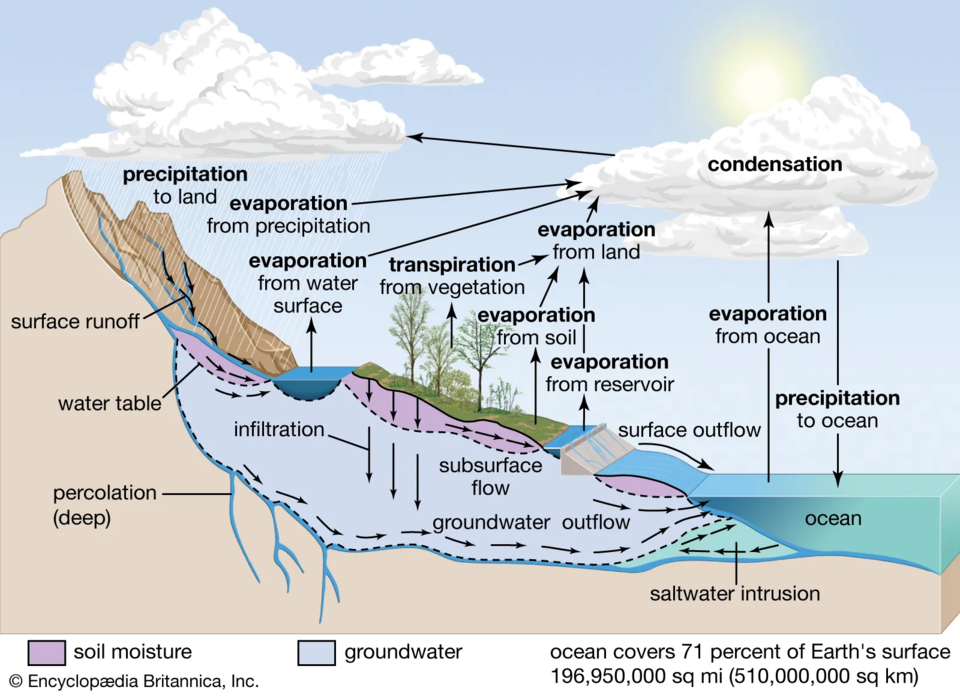Hydrologic cycle, budget, and models
1 Hydrologic cycle
- Sun-driven
- Very complex
- A closed system
- Has many open-ended subsystems, which causes many problems of water supply and allocation
2 Six major components in the hydrologic cycle
See Figure 1.1.
- $P$: Precipitation
- $I$: Infiltration
- $E$: Evaporation
- $T$: Transpiration
- $R$: Surface runoff
- $G$: Groundwater flow
3 Distribution of precipitation input
See Figure 1.2.
4 Hydrologic budget equations
4.1 Surface-flow components
\begin{equation} P+R_1-R_2+R_g-E_s-T_s-I = \Delta S_s \label{eq:S_s} \end{equation}
4.2 Groundwater-flow components
\begin{equation} I+G_1-G_2-R_g-E_g-T_g = \Delta S_g \label{eq:S_g} \end{equation}
4.3 Combined
\begin{equation} P-(R_2-R_1)-(E_s+E_g)-(T_s+T_g)-(G_2-G_1) = \Delta (S_s+S_g) \label{eq:S} \end{equation} or \begin{equation} P-R-E-T-G = \Delta S \label{eq:S2} \end{equation}
For large river basins (thousands mi2 or km2), the groundwater influx and outflux can be assumed to be equal ($G=0$).
Over a long period of time (5+ years), seasonal excesses and deficits in storage tend to balance out in large watersheds ($\Delta S=0$).
For large watersheds over a long period of time, Eq. (\ref{eq:S2}) reduces to \begin{equation} P-R-ET=0 \end{equation}
5 Hydrologic models
All models are wrong, but some are useful Box (1976)
Hydrologic models
- Physically-based models
- Data-driven models
6 Modeling uncertainty
- Our lack of understanding of the true system
- Approximation of the system
- Abstract parameters
- Measurement errors
- Commensurability issues
- Naturally random phenomena
7 Example 1.1
The drainage area of the James River at Scottsville, Virginia, is 11,839 km2. If the mean annual runoff is determined to be 144.4 m3/s and the average annual rainfall is 1.08 m, estimate the ET losses for the area. How does this compare with the lake evaporation of 1 m/yr measured at Richmond, Virginia?
8 Problem 1.2
Assume you are dealing with a vertical-walled reservoir having a surface area of 500,000 m2 and that an inflow of 1.0 m3/s occurs. How many hours will it take to raise the reservoir level by 30 cm?
9 Problem 1.4
The annual evaporation from a lake is found to be 125 cm. If the lake’s surface area is 12 km2, what is the daily evaporation rate in centimeters and inches?
10 Homework: Hydrologic budget
- Problem 1.7
- Problem 1.8
Show your full work.
